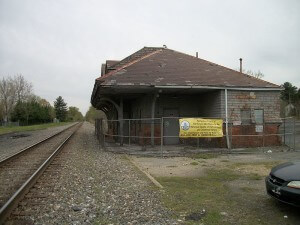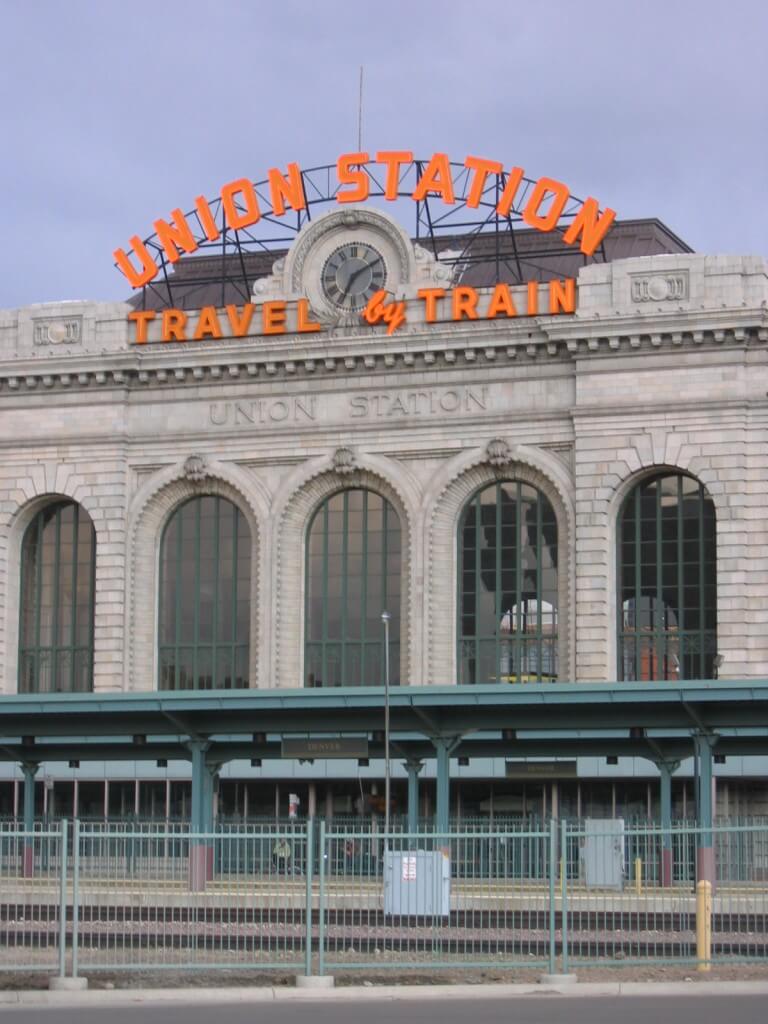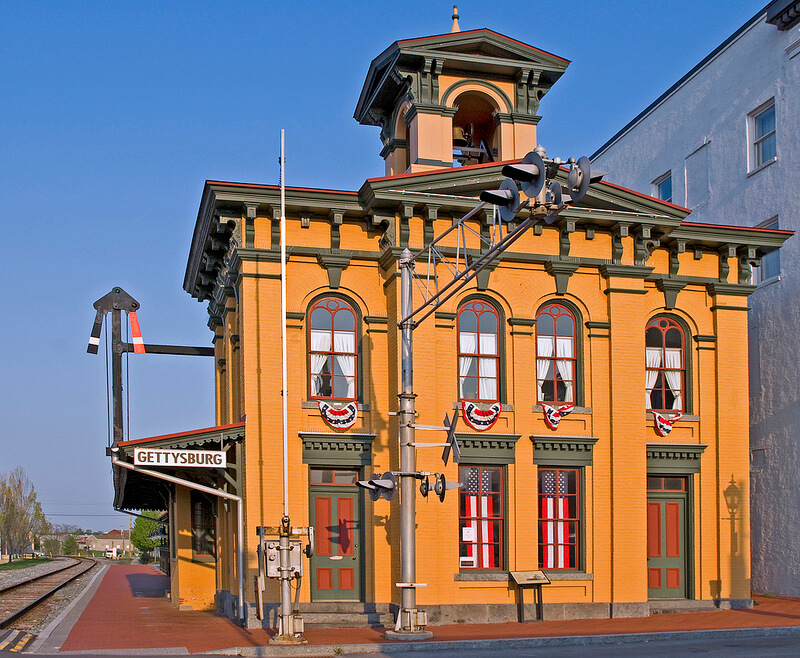Bumping around the Internet, I came upon this group of images of North American train stations. Some I recognized, while others were from towns I have never considered. As I looked at the first photos, more photos kept loading, until there were hundreds. Frame ones with gingerbread. Adobe ones. Victorian ones. Richardsonian Romanesque ones. Art Deco ones. Lost beauties and sterile Amtrak replacements c. 1975. Every town reached by rail used to have some sort of structure for the arrival of friends, businessmen, and people starting again. The rail station used to fall into the same category of civic structures as city hall. Their design and ornament was meant to inspire the curious, to anoint that experience of choosing a destination, buying a ticket, and climbing aboard to points far flung.

Aberdeen, Maryland Baltimore & Ohio train station, possibly designed by Frank Furness, c. 1885. Photo: DanTD, Wikimedia Commons.
Many a sad train station rots by the rail. For years, the Historical Society of Harford County has been trying to save the Baltimore & Ohio station in Aberdeen, Maryland. Not an architectural gem by any means, the station is not exceptional, except to people within the town. It is a material remnant of imagination outside the perimeter of their everyday experience. The train station evokes adventure more than a zippy car ever could. Whereas cars became personal mechanisms to leave one’s familiar sphere, the railroad station was a civic investment. It was a access point for all, both for engagement with the new, and departure from what had been.
Many stations have been destroyed for real estate development and parking lots. Resourceful people have recovered, restored, and turned some stations into restaurants or antique shops. Others sit silently next to a rusted and vacant rail. Without the potential of travel, I feel there is loss of excitement in those old stations. They can’t compare to the sagging awning which rattles when the engine pushes by, the cars slow, and the door opens for you.



[…] TV & Movie Sites Tour Manhattan may be the most popular “borough” for visitors to the city, but it’s not the …if you really want to explore NYC. And whether you plan an afternoon in Queens, Brooklyn, Staten […]